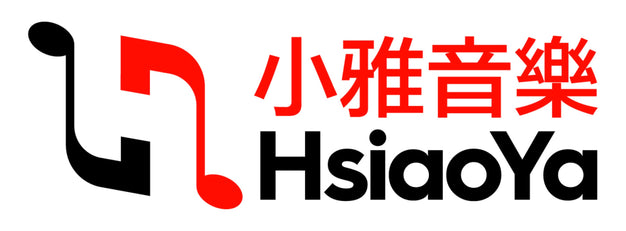
Graffiti 陈银淑 总谱 博浩版
我们大多数人在面对 "涂鸦 "一词时,很可能会将其与遍布城市景观的荒凉墙壁涂鸦联系起来。然而,这并不是涂鸦的全部:克利、米罗、杜布菲和毕加索等艺术家都对涂鸦感兴趣(毕加索曾亲自在巴黎的墙上作画)。在我们这个时代,街头艺术是一个非常有趣且极具争议的现象,它偶尔会诙谐地批评城市的商业化。街头艺术家们的最佳表现是挫败了无处不在的大众媒体和广告所造成的期望--在柏林、巴黎或纽约等大都市,我们可以找到一些特别突出的例子。虽然这是涂鸦最初的刺激因素,但它最终还是转向了相当不同的方向:它与街头艺术现象(或视觉艺术)的联系即使有,也是非常松散的。音乐既不是说明性的,也不是程序化的,其主要思想是创作一首不受时间和地点限制的音乐,并在不同的表达方式之间形成强烈的对比。第一乐章 "Palimpsest "是多维的、多层次的,可以听到多种风格的典故。 第二乐章 "Notturno urbano "与前一乐章的亢奋形成强烈对比。乐章以悠远而逐渐接近的钟声开始,整个乐章的音乐素材都来自钟声。乐器的使用往往不落俗套:管乐和弦乐都采用了扩展技巧,这使得乐章更加冷峻和神秘。 第三乐章技巧性极强,是一种 "城市通奏曲"(这种音乐形式的名称实际上源自西班牙语 "pasar una calle",即 "沿着街道行走")。它由八个精辟的和弦组成,由铜管乐器连续演奏,尽管总是以不同的方式演奏。在这一乐章中,两个世界发生了碰撞:铜管乐的攻击被不同乐器的飞快插奏所注解,这些插奏在性质和长度上变化多端。整体而言,《涂鸦》的音乐语言在粗犷与细腻、复杂与透明之间转换,对比强烈,曲折迷离,既非调性,也非无调性。涂鸦》要求音乐家具有极高的敏捷性、精湛的技艺和不断变化的视角;每件乐器都被视为独奏家。《涂鸦》由洛杉矶爱乐协会、伦敦巴比肯艺术中心、金泽管弦乐团、德国北威州艺术基金会和 Ensemble musikFabrik 委托创作。 它于 2013 年 2 月 26 日由古斯塔沃-杜达梅尔指挥的洛杉矶爱乐乐团新音乐小组首演"
作曲家: Chin, Unsuk
乐器: large ensemble
出版社: Boosey & Hawkes
原文简介:
Most of us, when confronted with the term “graffiti,” are likely to associate it with the rather desolate wall scrawlings all over our urban landscapes. However, this is not the whole picture: no less artists than Klee, Miró, Dubuffet, and Picasso were interested in it (the latter painting examples himself on Parisian walls). In our time, there is the highly interesting and controversial phenomenon of Street Art, which has occasionally wittily succeeded in criticizing the commercialization of cities. At their best, street artists have been able to thwart the expectations created by omnipresent mass media and by advertising – one can find some particularly remarkable examples in metropolises such as Berlin, Paris, or New York.Though this was the initial stimulus for Graffiti, it finally branched into rather different directions: it is only very loosely, if at all, connected to the phenomenon of Street Art (or to the visual arts). The music is not illustrative nor is it programmatic and the main idea was to compose a music which is not restricted as to time or place, and which offers strong contrasts between different modes of expression.The three movements’ headings give a hint of the changing modes, moods, and structures of the music. The first movement, Palimpsest, is polydimensional and many-layered; one can hear allusions to a multiplicity of styles. The second movement, Notturno urbano, forms a strong contrast to the hyperactive previous movement. It starts with distant and gradually approaching bell-like sounds, from which the whole movement’s musical material is being derived. The instruments are often used in an unconventional way: the winds as well as the strings employ extended techniques, which contributes to the aloofness and the mysteriousness of the movement. The third, highly virtuosic, movement, is a kind of an 'urban passacaglia' (the name of this musical form actually derives from the Spanish 'pasar una calle', 'to walk along a street'). It consists of eight incisive chords, which are played continuously by the brass, albeit always in a different way. Two worlds collide in this movement: the brass attacks are commented upon by flitting interjections of different instruments, which are highly varied in character and length.As a whole, the musical language of Graffiti shifts between roughness and refinement, complexity and transparency. It is rich in contrast and labyrinthine, neither tonal nor atonal. Graffiti calls for great agility, virtuosity, and constant changes of perspective from the musicians; each instrument is being treated as a soloist.Graffiti was commissioned by the Los Angeles Philharmonic Association, Barbican, London; Orchestra Ensemble Kanazawa, Kunststiftung NRW and Ensemble musikFabrik. It was first performed on 26th of February 2013 by the Los Angeles Philharmonic New Music Group conducted by Gustavo Dudamel.
